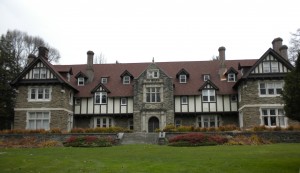I recently posted an article Agnes Irwin School’s continued quest to purchase Berwyn property for playing fields. This is an important topic and one that should not be buried by more recent posts. In today’s Main Line Suburban Life there is a Letter to the Editor from one of the neighbors of this proposed property purchase. Jan Semmer’s letter speaks directly to the issues of tactics being used by supporters of the playing field purchase. Below is Ms. Semmer’s Letter to the Editor followed by my article, ‘Agnes Irwin School Purchase of Berwyn Property for Playing Fields Remains an Open Issue!’.
Here is Ms. Semmer’s Letter to the Editor:
Agnes Irwin School and supporters play dirty
To the Editor:
Agnes Irwin School (AIS) is attempting to change zoning in Easttown Township to install athletic fields and associated infrastructure at the former Hawkins estate at 1035 Sugartown Road, Berwyn. Based on the facts and a thorough review of their application, the proposed zoning change was unanimously voted down at the Easttown Township Board of Supervisors meeting on April 5, 2010. Instead of accepting their defeat, AIS (who claims to be very community-oriented) and supporters are stooping to new lows and are determined to break ground in the very community that doesn’t want them.
I’m dismayed at the scare tactics that AIS and their supporters are using. Supporters of this project hide behind unsigned letters to township residents and have created anonymous e-mail addresses to scare the residents into thinking that the AIS proposal is the best possible use of the current space. I won’t dignify the misinformation being broadcast by repeating it here, and some of it is borderline racist, but if these letters and e-mails were indeed factual, why are they not signed? Why use anonymous spam email addresses unless the senders know their points will not stand up to public debate?
I’m disappointed that a school that is educating young girls would allow for such tactics. If they will stoop this low to get the zoning changed, why should we believe their ultimate motives are only athletic fields?
A disappointed resident,
Jill Semmer, Berwyn
Thank you to Ms. Semmer for her Letter to the Editor. My earlier article on the same topic may offer some background information on the proposed land purchase by Agnes Irwin. Ms. Semmer mentions the use of anonymous email addresses and unsigned correspondence that is circulating in the Berwyn community. I have copies of several of these letters/emails and provide quotes from the correspondence. The following article may help you better understand the proposed land purchase agreement by Agnes Irwin:
____________________________________________________________
Purchase of Berwyn Property for Playing Fields Remains an Open Issue!
In addition to Delaware Valley Friends School’s playing field and the impact their turf field has had on its neighbors, another recent story re playing fields is coming back to light. In early March, I wrote about the Alexandra Hawkins estate in Easttown; this large property (106 acres) in Berwyn had been vacant for a couple of years since Mrs. Hawkins passing. Mrs. Hawkins had no children and no heirs; the majority of her estate was left to Bryn Mawr College (her alma mater). Earlier this year, the Agnes Irwin School in Rosemont entered the local Berwyn real estate market picture with a proposal to purchase the Hawkins property on Sugartown Road and convert it to athletic fields for its students. The agreement included an attached purchase price in excess of $6 million.
The agreement between Irwins and the Hawkins estate caused an immediate concern among neighbors of the proposed playing fields. Easttown zoning in R-1 does not permit education use or athletic fields and 26 of the 106 acres of land are protected by the Brandywine Conservancy easement. A special Easttown Township supervisors hearing was held in late March 2010 to discuss the project and proposed change of usage. The Planning Commissioners had not been in favor of the project but sent it on to the supervisors for a special hearing.
Representatives from Irwins explained the project included adding 2 turf fields, 2 grass fields, 2 softball fields, a track, a 5,000 sq. ft. facility, 100 space parking lot and drop off area for buses. The Berwyn neighbors attended the meeting and presented strong opposition to the project. A variety of issues and concerns related to Irwins project were presented including increased traffic and congestion, additional noise, related stormwater problems, etc.
There was also an underlying thought that the purchase of the Hawkins property as playing fields was a smokescreen by Irwins; that the ultimate future plan was that the school itself would eventually relocate to this Berwyn site. (Much like Episcopal Academy’s new home in Newtown Square). Agnes Irwin is located in Rosemont on 16 acres, so it is not a stretch for Easttown residents to wonder whether Irwins real objective is to relocate the school to the Hawkins property with its 106 acres. Also, why would the school require the Irwins students to commute the 20 min from their school, for practice and games at the Berwyn location? Why would the school spend in excess of $6 million for playing fields when the Hawkins property is reportedly worth $4-5 million? These questions and others swirled around this proposed land development project.
When the supervisors vote was taken on the Irwins proposed plan, there was an unanimous defeat (4-0, Marc Heppe recused himself). I assumed (and I’m guessing so did many of the Berwyn neighbors) that with the proposed plan defeated, the proposed land development project in Easttown ended, and that Irwins would look elsewhere for their playing fields. Apparently I assumed incorrectly; I have discovered that the girls school and their representatives are not giving up so easily.
Since the defeat of Irwins proposed land development project, a number of anonymous letters and emails have circulated in the Berwyn community concerning the schools continued interest in the purchase of the Hawkins property. In reading the annonymous communications, I have been surprised by the tone and approach of some of the supporters of this project. A very official-looking email address is used in some of the correspondence – indicating ‘Hawkins Farm’ as the originator.
Neighbors of the Hawkins property have received correspondence encouraging the support for Irwins playing fields by suggesting what other prospective buyers may have in mind for the property. In other words, suggesting that the playing fields may be the ‘lesser of the evils’ depending on your vantage point. I have no knowledge as to whether some of these other prospective buyers exist or not. However, I am fairly confident that Tredyffrin Easttown School District (TESD) is not in a financial position to be making multi-million dollar real estate deals!
Here is an excerpt from the anonymous ‘Hawkins Farm’ email address received by neighbors. To protect the individual recipients, I will not indicate my sources of this or other Irwins – Hawkins correspondence.
Alternative uses for the Hawkins Estate
The property will be sold, her will (public record) specifies that the property be sold, and the recipients are noted area non-profit organizations. Typically the longer there is a delay in a sale; the lower the price will go, thus expanding the buyer pool.
Facts:
Easttown Township regulates the Zoning rules/regulations of the township, not the Brandywine Conservancy. Conservation Easements can be re-evaluated and adjusted to meet party’s needs.
Examples:
Easttown Township – the Castle Hill development off Waterloo Road. This land was transfered from John C. Haas to the Brandywine Conservancy to Castle Hill Realty (Bentley Homes) – to build houses on preserved ground.
Newtown Township – The Harrison Estate St. Davids Road, this land was transfered from the Harry W. Harrison Trust to the Brandywine Conservancy to Ghadwell Associates (Bentley Homes) – to build houses on preserved ground.
The Hawkins Estate has both AA and R-1 Zoning in place; the following uses are permitted. Permitted Uses By Right AA and R-1:
– Accessory Use
– Accessory Dwelling Unit
– Single Family Dwellings
– Farm
– Forestry
– Lot Averaging Development
– Sale of Agricultural Produce
Permitted Uses By Conditional Use AA and R-1:
– Bed and Breakfast
– Educational Use
– Place of Worship
– Riding Stable
Eminent Domain – the property presents a number of attractive attributes for local, state and federal government agencies and requirements.
It is known in the market tha the following parties have expressed interest in the property:
– T/E School District utilizing eminent domain
– A wealthy philanthropic family to purchase the property for their foundation to utilize the property for a camp for underprivileged children and teens
– A Faith – Based group utilizing Federal Fair Housing Laws for place of worship
Here is an excerpt from an anonymous letter sent to Leopard Lakes residents:
Dear Lakers,
As we must all be aware something is going to happen to the Hawkins Estate, hopefully it will be something that satisfies all us. I have heard that the Agnes Irwin School, which was turned down by the Township last month is trying to regroup and come back with a new proposal.
A close personal friend is an active real estate agent in Lower Merion, and we were discussing how the Agnes Irwin School was turned down by the Township. He informed of other potential buyers who are currently in the market, one in particular was of great concern. The potential buyer is The Foundation for Islamic Education, at 1860 Montgomery Avenue, Villanova. They are currently located on 20 acres and are in the market for a larger piece of ground. It is my understanding the Hawkins Estate fits much of their criteria. . . “
There is misinformation floating around the Berwyn neighborhood, and it appears that some of the fiction is an orchestrated attempt by Irwin supporters to change the minds of some of the local residents. The March special meeting of the Easttown supervisors indicated a unified opposition to Irwins land development plans and now it appears that the matter is far from over. The following fact sheet was put together prior to the special supervisors hearing in March and I find the myth vs. fact element valuable:
The Agnes Irwin School (AIS) has a proposal to develop playing fields and related facilities at the Hawkins Property (1035 Sugartown Road). The property is located in the AA and R-1 Residential Zoning Districts. The Agnes Irwin presentation will explain a proposal for zoning amendments to allow athletic fields on properties with a minimum gross lot area of 50 acres, and to amend the provisions for education uses (source: Easttown Township website).
Myth: The Agnes Irwin School (AIS) proposal is better than 250 homes. (R. Weiss, attorney for AIS, AIS meeting, 3/15/10)
Fact: Only 5 houses can be built on the Hawkins property without a zoning change. (source: p. 11 Brandywine Conservation Easement).
Myth: More playing fields would be great for our township for residents to use! (public comment, AIS meeting, 3/15/10)
Fact: AIS will use them daily from 4-6 PM, many Saturday, and for summer camp. When not in use by AIS, the tennis courts will be locked and a new entrance gate will be closed. AIS has not yet determined when the fields would specifically be available to Township residents (source: AIS meeting, 3/15/10)
Myth: This is a tax savings! Had the Township purchased this property, there would have been a bond or a tax increase for Easttown residents. (R. Weiss, attorney for AIS, AIS meeting, 3/15/10).
Fact: Easttown Township never looked at purchasing this property from Mrs. Hawkins’ Estate. The AIS proposal will decrease tax revenues to the Township since AIS will NOT pay property taxes (source: Easttown Twp, AIS).
Myth: Conservation easements get broken all the time. A developer will come in and break this one and do what they want (public comment, AIS meeting, 3/15/10)
Fact: Brandywine Conservancy has not had a conservation easement broken — their sole existence is to uphold conservation easements. This is a deed restriction in perpetuity for anyone purchasing the property. (source: Brandywine Conservancy).
The next meeting of Easttown’s Board of Supervisors is Monday, June 7. A very real sense from some in the Berwyn community exists that Irwins and their representatives have re-grouped from their defeat of March and are preparing to come back strong.
Will Irwins supporters be successful in their attempt to sway public opinion through the use of anonymous letters and email tactics?
 I am very supportive of our local firefighters and all that they do for the community. In addition to keeping the residents safe, our volunteer fire companies (Radnor, Berwyn and Paoli) also engage in year-round fundraising efforts. I’m happy to publicize an upcoming fundraiser for Paoli Fire Company – the community is invited to attend and show their support.
I am very supportive of our local firefighters and all that they do for the community. In addition to keeping the residents safe, our volunteer fire companies (Radnor, Berwyn and Paoli) also engage in year-round fundraising efforts. I’m happy to publicize an upcoming fundraiser for Paoli Fire Company – the community is invited to attend and show their support.
